06:58
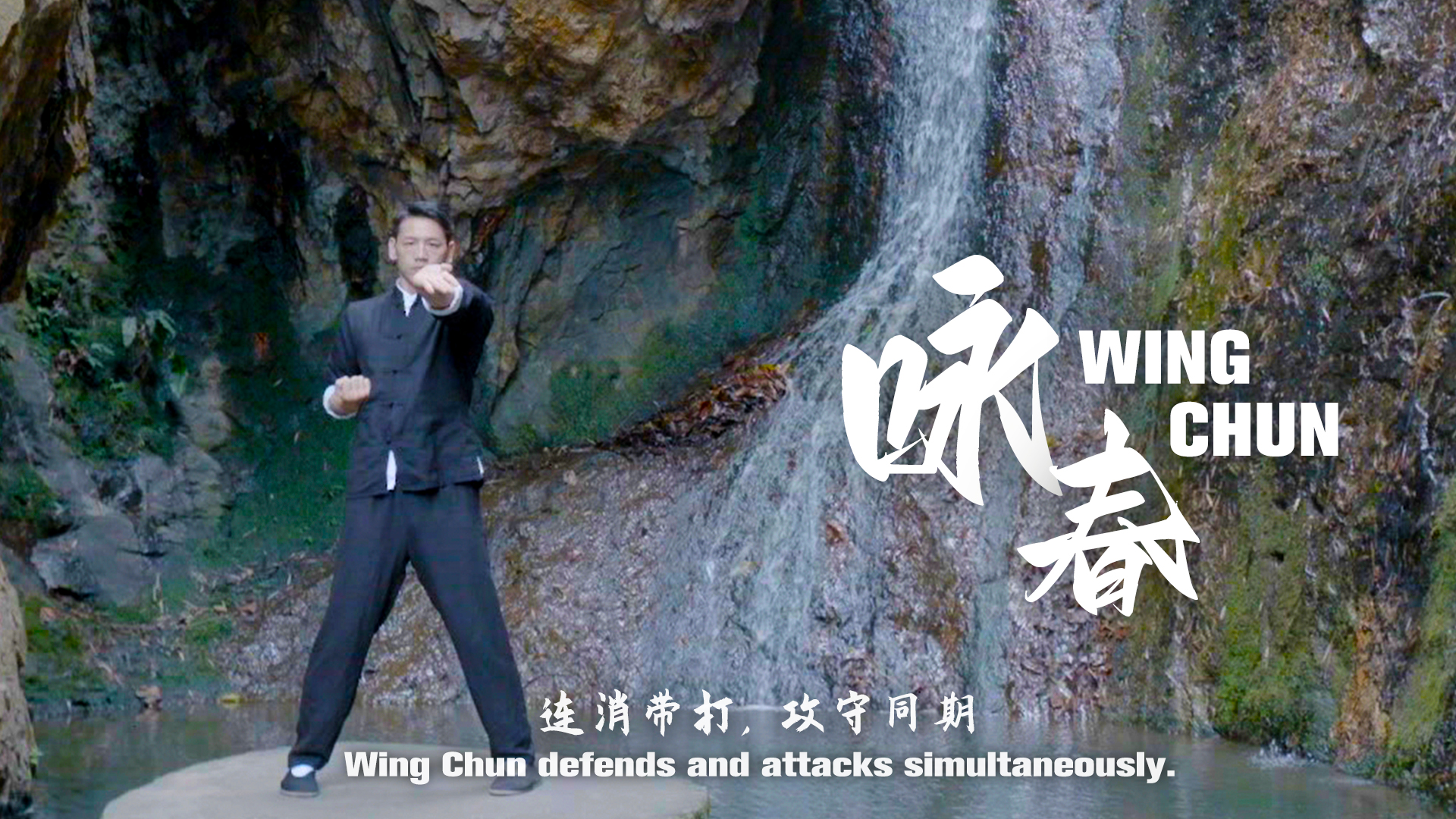
Wing Chun originated in Foshan City, south China's Guangdong Province. The martial art is a branch of Shaolin Nan Quan. The name commemorates the legendary founder of Yan Yongchun.
Yan grew up under the tutelage of a senior Buddhist nun Wumei. He created the Quan martial art after seeing a fight between a snake and a crane and perfected it under Wumei's instruction. Wing Chun's creation, credited to Yan Yongchun, was spread later by Leung Jan, a practitioner who became known as Mr. Jan, and prospered under Yip Man.
Wing Chun is a self-defense technique used to stop attacks. It uses the principles of human mechanics, lever structure, and triangle mechanics to attack the opponent's weaknesses. It is characterized by quick arm movements in close combat with bursts of power. It defends and attacks at the same time.
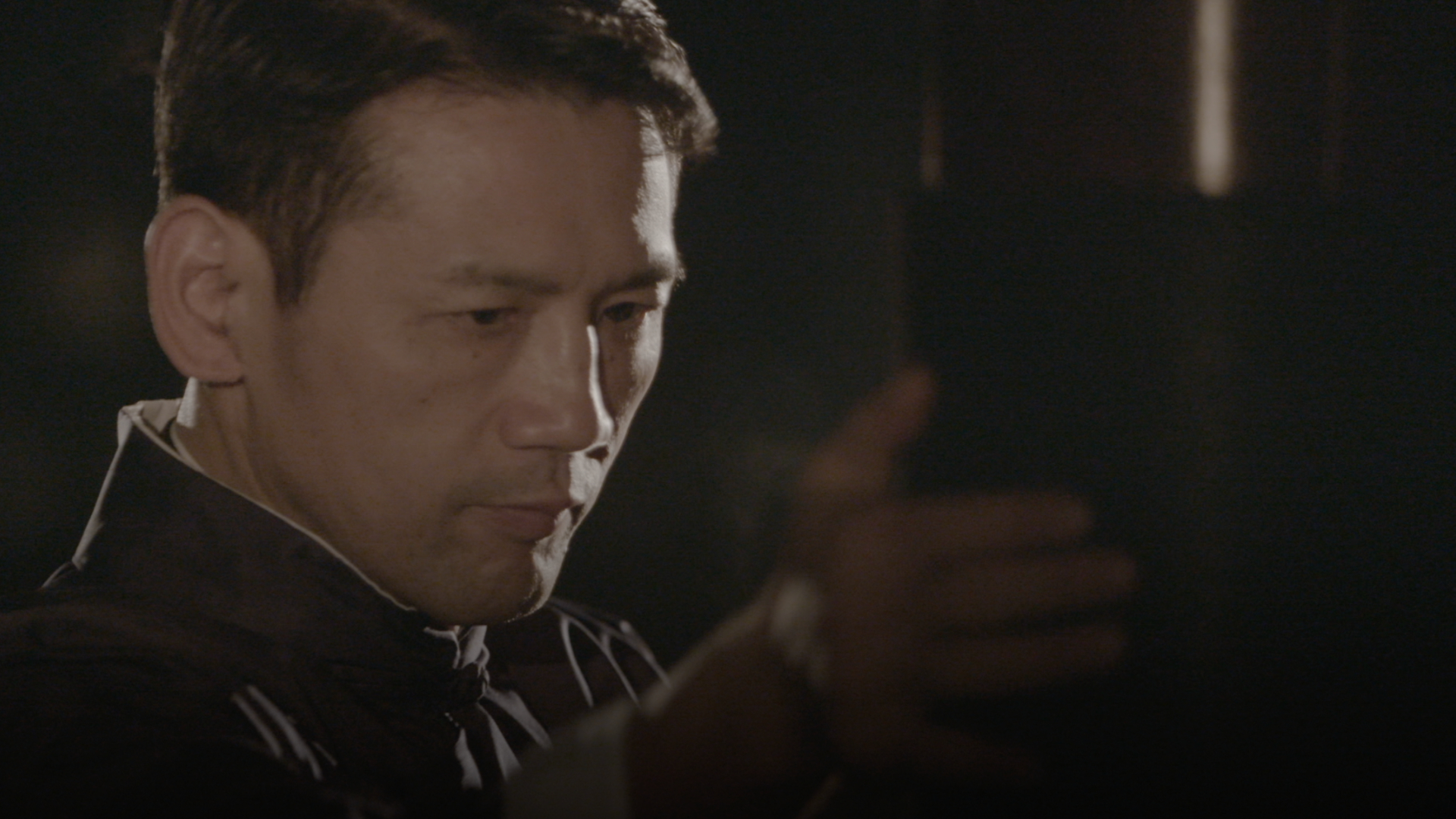
Dong Chonghua practices Wing Chun. /CGTN
Dong Chonghua practices Wing Chun. /CGTN
Dong Chonghua is a second-generation inheritor of Ip Man's Wing Chun. While there are many different Wing Chun schools, Dong turned to Ip Man's eldest son, Ip Chun. He had a martial arts dream as a child. Before practicing Wing Chun, he would often imitate movie star Bruce Lee. That's why he wanted to learn Wing Chun from Bruce Lee's master, Ip Man.
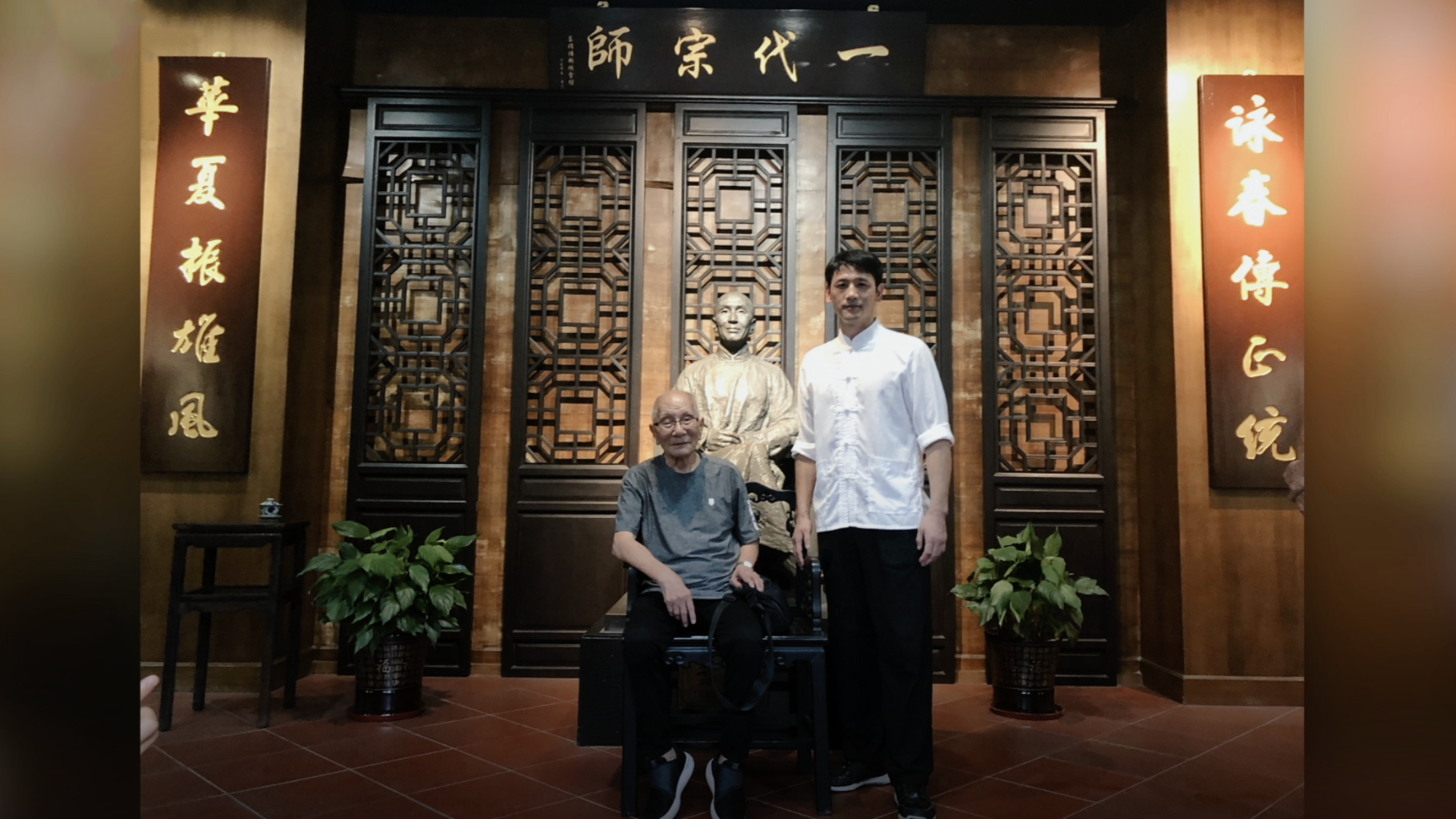
Dong Chonghua with his master Ip Chun. /CGTN
Dong Chonghua with his master Ip Chun. /CGTN
The first form of Wing Chun is called Siu Nim Tao, literally "little thought." It consists of arm and hand movements. Siu Nim Tao comes from Zen and is based on the philosophy of cleansing your thoughts and truly understanding yourself. "There is a saying that with wrong thoughts, you live a deviant life, but with upright thoughts, you live a decent life," said Dong Chonghua. He noted that if the learner cannot train in Siu Nim Tao well, they won't have a firm foundation, which means being weaker in more advanced moves.

Dong Chonghua practices Wing Chun. /CGTN
Dong Chonghua practices Wing Chun. /CGTN
"All vital parts are in a central line. We defend the line and also make use of it," Dong said.
Vital body parts such as the eyes, nose, throat, abdomen, and genitals, he said, are almost all on the centerline. Wing Chun moves are aimed at protecting these organs. Thus, it is called "Protecting the Centerline," the principle of Wing Chun.
"Spread the hand. Turn the hand. Chicken-feet hand. These are three unique skills of Wing Chun," Dong said.
In Wing Chun, the training strategy involves opponents practicing Chi Sau (sticky hands). Through the contact of hands, a practitioner can feel the flow of strength through an opponent's body. Then one can discover weak spots and attack them. Wing Chun also uses a wooden dummy. The learner must think while practicing, and use all kinds of techniques to beat the dummy. The process can be very boring. Only when practicing basic movements again and again can one finally reach the standard.
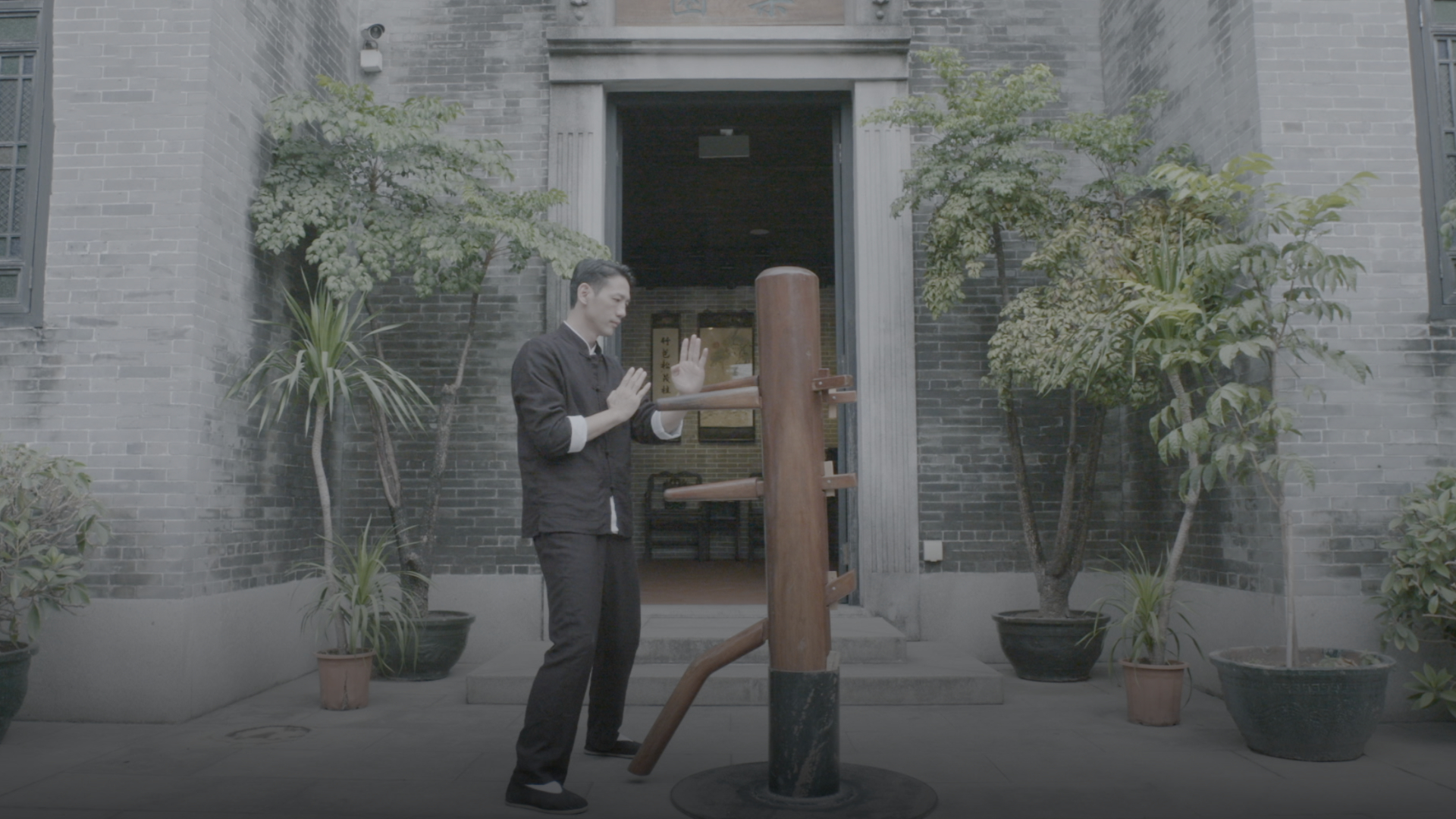
Dong Chonghua uses a wooden dummy in practicing beating techniques. /CGTN
Dong Chonghua uses a wooden dummy in practicing beating techniques. /CGTN

Dong Chonghua practices Chi Sau (sticky hands) with his opponent. /CGTN
Dong Chonghua practices Chi Sau (sticky hands) with his opponent. /CGTN
"There was a time I could not hold on any longer. I wanted to quit," Dong said. Nevertheless, following the school of Bruce Lee's master's in Foshan offered a golden opportunity for him to hold on. Besides, he started to learn some actual combat skills to reduce the boredom of practicing basic moves. "Without a master or opponent, you learn from the mirror or the wooden dummy."
When he doesn't have an actual opponent, he practices in front of the mirror or uses the dummy as an opponent and imagines it is alive.
"It is cultivation while practicing martial arts. Your mind and will are trained. Your hard work will eventually pay off," Dong said.
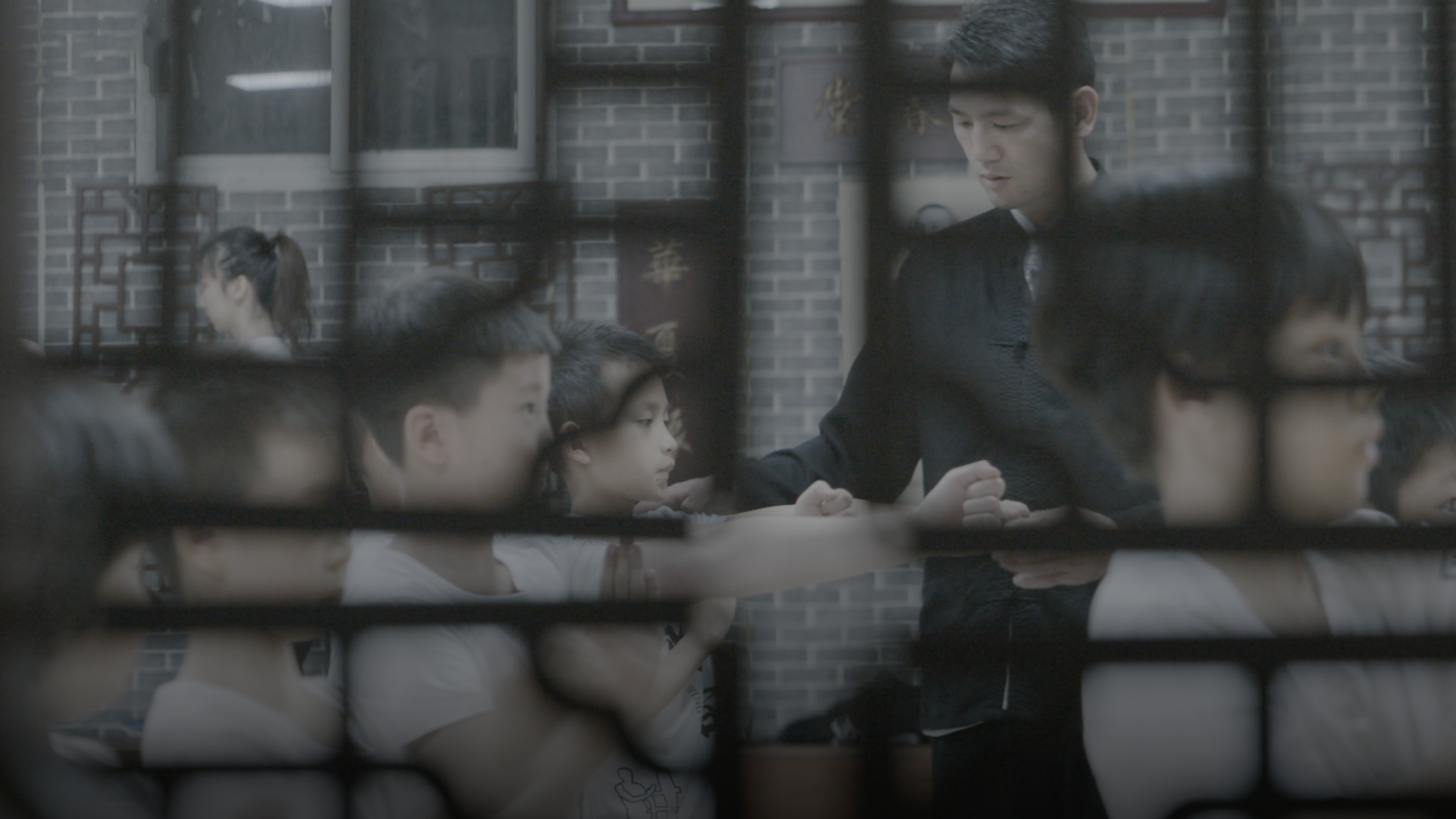
Dong Chonghua teaches children Wing Chun. /CGTN
Dong Chonghua teaches children Wing Chun. /CGTN
In 2014, Wing Chun was included in China's fourth national intangible cultural heritage list. The old doctrine of Wing Chun requires disciples to have positive energy, promote harmony and respect their teachers. At the same time, they shall assume responsibility and fight as best as they can.
Since ancient times, Wing Chun has always been a technique for gentlemen.

